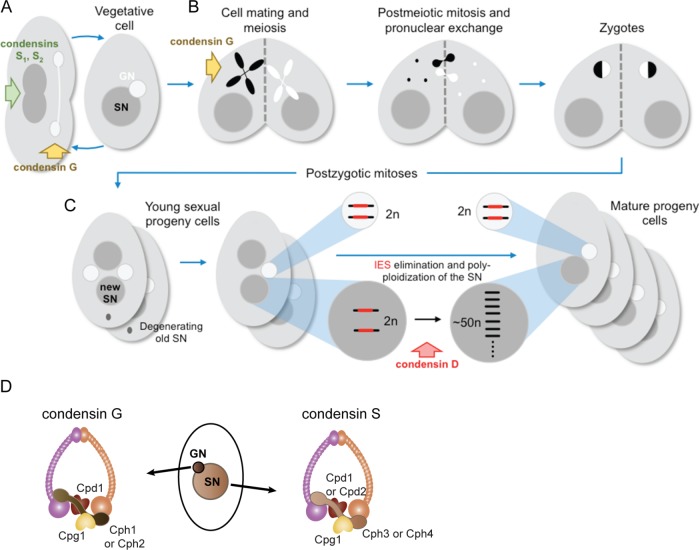FIGURE 1:
Growth, sexual reproduction, and nuclear differentiation in Tetrahymena. (A–C) Schematic diagram of the Tetrahymena vegetative and sexual life cycles and nuclear dualism. (A) In vegetative reproduction, the GN divides mitotically with the help of condensin G, and the polyploid SN employs condensin S1 to evenly distribute chromosomes to the daughter cells. (B) In sexual reproduction, starved cells of different mating types pair and the GN of both cells undergo meiosis (which requires condensin G) to generate four meiotic products, one of which is chosen as the gamete. The gamete in each cell is duplicated and the partners exchange gametic nuclei, which fuse to form the zygotic nucleus. (C) After two rounds of postzygotic mitoses, the progeny cells contain four nuclei, two of which develop into new SN, while the old parental SN is degraded. Condensin D is required for SN development, a process that includes chromosome breakage, IES elimination, and chromosomal endoreplication. (D) GN and SN condensin complexes in Tetrahymena.

